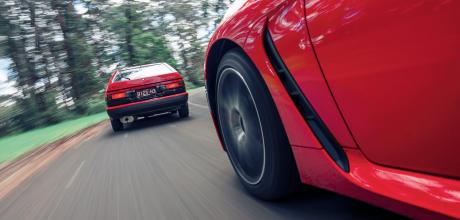1986 Toyota Sprinter Trueno AE86 vs. 2024 Toyota GR86 GT ZN8
Toyota’s cult classic AE86 meets the new GR86 to see if there really is a common thread of dynamic DNA linking the 36 years that separate this pair.
Words Dylan Campbell
Photos Alastair Brook
FIRE STARTERS TOYOTA AE86 MEETS GR86
Toyota’s lightweight coupe from the ’80s has become a cult classic for its driving purity. So how much did it influence its modern-day namesake?
There’s smoke coming from under the bonnet, and my mind frantically races trying to remember if there’s a fire extinguisher under the passenger seat. A lyrebird cackles from within the bright lilac ferns somewhere nearby, while I try to convince myself the slowly wafting smoke is from the brakes. Brakes that smell, peculiarly, like bushfire. Brakes that were hardly used while hammering uphill in this underpowered 1986 buzz box, trying to keep up with a new Toyota GR86.

As we reach the top of the winding Donna Buang Road east of Melbourne, the smoke seems to have subsided as we lift the heavy steel bonnet to find a crispy eucalyptus leaf attempting self-immolation by means of wedging itself between cylinders two and three of a 35-year-old cast-iron exhaust manifold. The leaf is extracted, and there is relief. Today, no cars are burning to the ground, but it is a fiery undertaking no less: we’re comparing new versus old, 1986 Toyota AE86 Sprinter GTV versus 2022 Toyota GR86 GT.
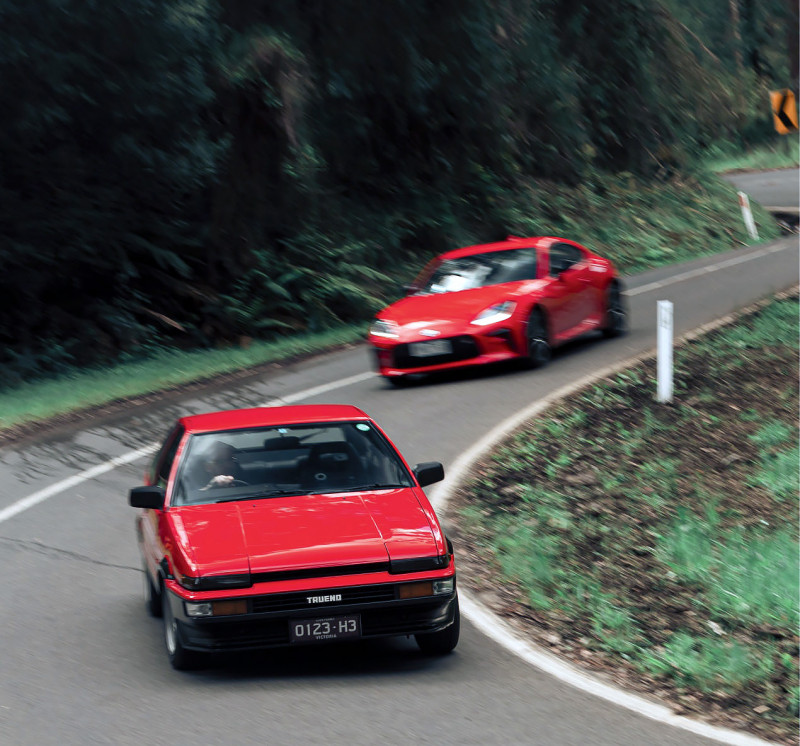
The AE86 communicates the road and what the chassis is doing with perfect clarity
The objective: to see if Toyota has imbued more AE86 DNA into the second iteration of its rear-drive sports car. The first version, as released in 2012, was more an adopted than direct descendent of Toyota’s cult classic AE86. The Toyota 86 and its Subaru BRZ twin were both brilliant in their own right – enough to win Wheels Car of the Year 2012, no less – but failed to rekindle some of the spark of the 1980s original. Namely under the bonnet, the FA20 2.0-litre boxer four-cylinder titillating in a way a new dishwasher might: undoubtedly useful, initially exciting even, but ultimately a thing of function than desire.
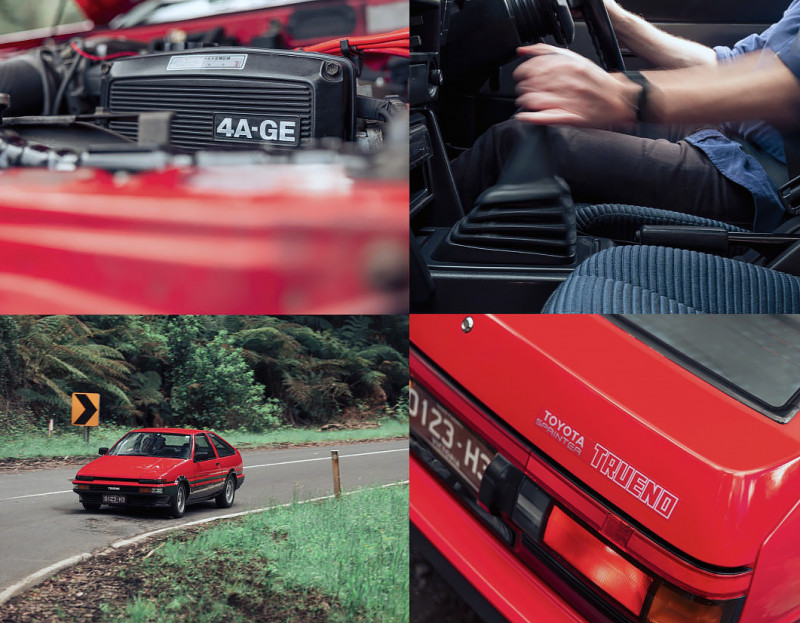
For the just-released ‘second generation’ (more an extensive facelift) of its rear-drive coupe, Toyota says it’s fixed that problem. Under that aluminium bonnet, an 8mm bigger bore increases capacity from 1998cc to 2387cc – and power from 152kW to 172kW. Torque is also up 38Nm to 250Nm, occurring earlier in the rev range (3700rpm versus 6600rpm), addressing a major complaint of the previous model. As well as a new, much more handsome cabin, there’s now an interior engine noise speaker too, producing a sweeter sound (even if it’s more Stevia than sugar).
To properly understand the new car, though, we must first understand the old. On the surface, the AE86 is simply a rear-drive Toyota Corolla from the 1980s – hobbled by prodigious hype. But forget its enormous cult following and you discover something special – something of a Japanese BDA-powered Ford Escort.
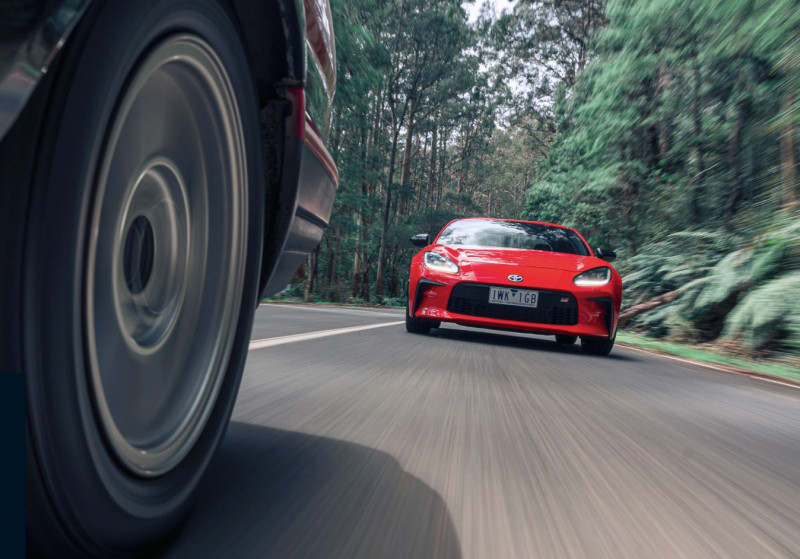
It takes a while to build momentum in the AE86, and once it’s going, every km/h feels precious
From the driver’s seat, the AE86 is light and airy courtesy of its thin pillars and large windows. The interior is classic 1980s Toyota; a tub of cheap plastics, urethane and vinyl. There is a faint smell of tobacco like seemingly every other ’80s and ’90s Japanese imported car.
The charms of weighing just 950kg and being rear- drive are obvious enough, yet it’s the 4AGE engine that is the AE86’s real secret sauce. In the 1980s, a twin-cam, 16-valve 1587cc inline-four – revving to 7700rpm from the factory – was something to be celebrated, even if it only had 96kW and 149Nm to show for it.
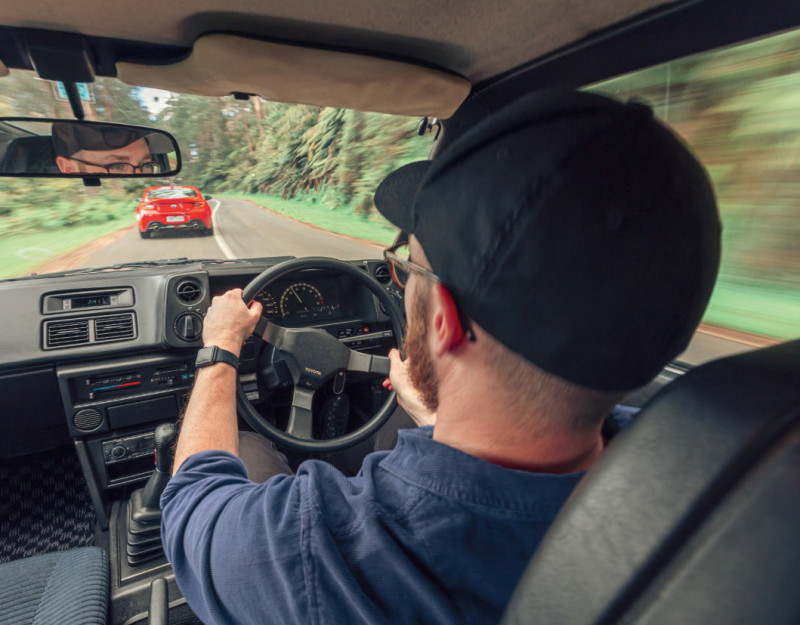
It doesn’t like to be rushed producing that power, either. While stationary, a blip of the lovely cable throttle generates an angry spike of revs – like a motorbike, which makes sense given Yamaha had a hand in developing the 4AGE. But on the move, in second gear and beyond, the 4AGE winds patiently through a long arc of revs, making quite the song in the process.
Call me biased – this is my personal car – but the AE86 is a delight to drive. Refreshingly mechanical, the entire car buzzes with feedback. It takes a while to build momentum – like a freight train – and once it’s going, every km/h feels precious. In this particular car, with aftermarket coil-overs and 2.5 degrees negative front camber, it’s all about carrying as much speed into the corners as you dare – and it can carry quite a lot. Enough to startle a brand-new GR86, to be sure.
Meanwhile, get an AE86 with a limited-slip diff on a wet or dirt road, and it’ll take about six corners to see why they are loved by drifters and rally drivers alike.
Getting out of an AE86 and into a GR86 must be like a pilot jumping from a Spitfire into a Joint Strike Fighter. You sit lower and are much more cocooned. It feels much bigger and wider. The cloth seats of the lower-spec GT, too, are a delight.

Get stuck into that bigger bore FA24 and compared to the AE86’s characterful 4AGE, the artificial engine noise coming through the speakers is certainly loud and interesting, but not quite to my taste. Others seem to like it – horses for courses. The trade-off for the artificial noise is strong power (172kW from a 2.4-litre atmo four would have blown everybody’s little minds just 20 years ago). There’s easy second-gear throttle steer, even in the dry. Toyota has absolutely ‘fixed’ the torque hole that plagued the old model, too, the grunt now much more linearly meted out.
Quirkily, the GR86 feels noticeably more rigid than the previous model – like it’s got a newly installed, invisible 10-point roll cage. For chassis rigidity, it would make a 2012 car feel like a convertible – and that car was hardly wobbly. Obviously, the GR86 is night-and-day faster than an AE86.
Whereas the AE86 is all about maximising mid-corner speed, the GR86 is about not overcooking it. In fact, it could handle much better rubber than its standard Michelin Primacy tyres, which require you to over-slow the car into most corners.
They’re not the most communicative or linear of tyres, and the fitment of Michelin Pilot Sport 4 rubber to the more expensive GTS model makes a big difference to the GR86’s driver appeal. The GR86 feels engineered for oversteer, too. Into corners, the rear-end is nervous and flighty, almost like an old-school hot hatch – and you’re constantly reacting to it.

In terms of chassis communication, the GR86 asks you to listen carefully. The steering is razor sharp, and there’s okay feel, but all the other controls leave you somewhat to work out where the limit might be.
The AE86, by comparison, communicates the road and what the chassis is doing with perfect clarity – but, it must be said, at all times. Some Melbourne roads, you don’t want to know too well… not that the GR86 is much better – fairly bumpy with lots of tyre noise by modern sports car standards.
There are other gripes with the GR86 GT. The throttle map has a big bulge right at the start of its travel, as if engineered to try to further mask any lack of low-down torque. It gets tiring constantly having to sensitively feed in throttle in traffic. The clutch is also still a bit numb; and the dry, notchy gearshift isn’t anything special. Then there’s the price – just 12 months ago, a (previous generation) 86 GT cost $32,180. It’s now $43,420. Toyota would argue it has a lot more standard equipment – and, to be fair, the interior represents a big step up, and not just because nobody’s been smoking in this one. Also, it’s still cheaper than the $70,000 or so the red AE86 would set you back…
And flawed as it might be as a daily driver, the GR86 is a much better sports car. It’s finally got the grunt it should have had in the first place. And it looks a lot better – one of the more accomplished facelifts of late. The GR86, like the new BRZ as well, gets under your skin in a way only a rear-drive sports car can.
However, while Toyota has built a better sports car, like the 2012 car it’s still fairly bereft of any noticeable AE86 DNA or lineage. With totally different engine characters, they remain more family friends than close relatives. That’s not to say the GR86 failed in rekindling an old flame, it just ignited something new.
Something that won’t have you fumbling around for a fire extinguisher...
TWO TOYOTAS, BY THE NUMBERS SPECS
- Model 2024 Toyota GR86 GT ZN8
- Engine 2387cc flat 4, dohc, 16V
- Max power 235bhp 147kW @ 7000rpm
- Max torque 184lb ft 250Nm @ 3700rpm
- Transmission 6-speed manual
- Weight 1291kg
- 0-100km/h 0-62mph 6.3sec (claimed)
- Economy 9.5L/100km
- Price $43,420
- Model 1986 Toyota Trueno AE86
- Engine 1587cc 4cyl, dohc, 16v
- Max power 129bhp 96kW @ 6500rpm
- Max torque 110lb ft 149Nm @ 5200rpm
- Transmission 5-speed manual
- Weight 950kg
- 0-100km/h 0-62mph 8.5sec (claimed)
- Economy 7.5L/100km
- Price $70,000 (now, estimated)
Left: Built for engagement and united by rear-drive purity, but that’s about the extent of the connection Show your kids: this is what a road-car tyre sidewall is supposed to look like.
Five-speed manual and ’80s corded velour… but what, no parachute pants?
Not sideways, because this isn’t a Touge, but he could be if he wanted to...
Australia’s lost twin-cam AE86s
THE NOT-SO-GREY MOTORSPORT IMPORTS THAT SNUCK THROUGH
KNOW THIS
Two Toyota factories in Japan pumped out more than 360,000 AE86s between 1983 and 1987, and a few were officially sold in Australia as Sprinters – breathless, SOHC, carburettor, drum-brake Nanna-spec specials. Any twin-cam versions have been privately imported. However, that’s with the exception of a very small number of twin-cam Levin GTVs that (allegedly) came to Australia in the 1980s. Toyota was officially campaigning twin-cam AE86s in the Australian Touring Car Championship at the time – and winning everything in the under two-litre class. Legend also has it that Toyota race driver John Smith dropped a race-prepped 4AGE, with about 142kW at the flywheel, into Mrs Smith’s AE86 daily driver.
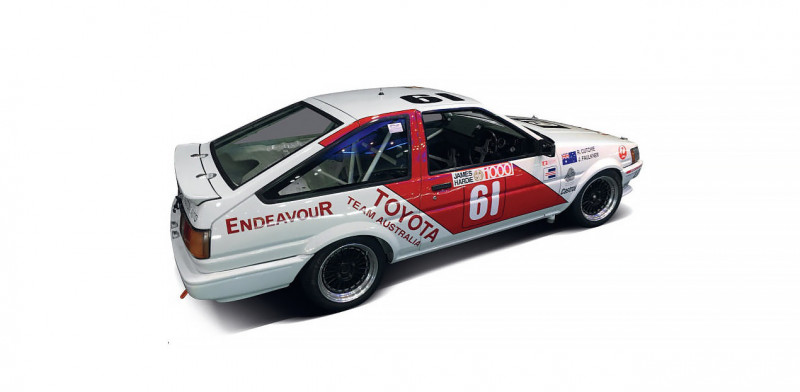
Will it ever blow for go?
PACKAGING CONSTRAINTS RULE OUT FORCED INDUCTION
SNAIL TRAIL
So the new FA24D engine is bigger and more muscular, but why couldn’t Toyota and Subaru just bolt in the WRX’s turbo 2.4-litre FA24F boxer-four, producing 202kW and 350Nm? That’s because companies insist that with its bottom-mounted turbo, they would need to raise the engine, ruining the GR86 and BRZ’s brilliantly low centre of gravity. What about slotting in the GR Yaris’s mega 200kW/300Nm 1.6-litre turbo inline-3? Gazoo Racing has indeed built a small batch of turbo three-pot GR86 prototypes to test synthetic fuels – which shows they’ve at least thought about it. Start praying.
Ignore the smell of vinyl and tobacco; crank up ‘Livin’ on a Prayer’


